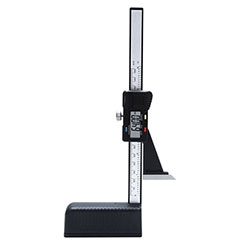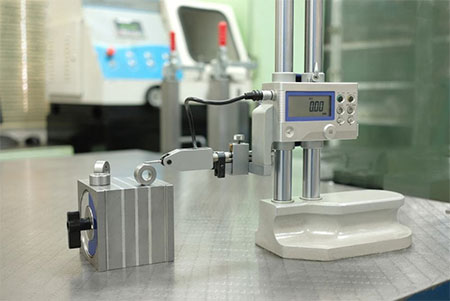How to Use a Height Gauge?
Height gauge is an instrument used to measure height, widely used in fields such as architecture, geology, surveying, agriculture, etc. The use of a height gauge can quickly and accurately measure the height of an object, providing important reference for engineering design and implementation. In this article, ATO industrial automation will introduce the usage methods of the height gauge to help readers better grasp the skills of using this tool.
Structure of a Height Gauge
The height gauge mainly consists of a telescope, a level gauge, a dial, a bracket, and other components. Among them, the telescope is the core component for measuring height, which is achieved by adjusting the position and angle of the telescope. A level gauge is used to adjust the levelness of the instrument and ensure the accuracy of the measurement. The dial is used to read the measurement results, and the bracket is used to fix the position of the height gauge.
How to Use
- Adjusting the level
Before using a height gauge for measurement, first adjust the levelness of the instrument. Place the height gauge on a horizontal plane and adjust the level so that its pointer points to the center. If the pointer of the level gauge shifts, it indicates that the instrument is not level, and you need to adjust the bracket or adjust the level gauge. - Adjusting the telescope
Adjusting the telescope is a key step in measuring height. Firstly, adjust the telescope to a vertical position, and then align the line of sight with the top of the object to be measured by adjusting the position and angle of the telescope. When adjusting the telescope, you can use a handwheel or adjusting lever to make fine adjustments as needed. - Read measurement results
When the telescope is aimed at the top of the object, the measurement results can be read through a dial. The scale on the dial represents the angle between the telescope and the horizontal plane, in degrees. Record the scale reading to obtain the height of the object.
Note for Using Height Gauge
- Personnel without professional training are not allowed to use it.
- After startup, please gently push up according to the display prompts before starting the measurement.
- If it is necessary to replace the measuring head, please fix the fixture with your left hand before replacing it.

- When installing the measuring head, do not use too much force as it may damage the screw teeth.
- After using the calibration blocks, please place them in the box and do not place them on the marble table, as they may fall off and be damaged.
- Temporarily unused measuring heads should be placed in relevant boxes to prevent damage.
- Please keep the marble table clean and tidy at all times.
- During measurement, the level of the height gauge should be maintained to avoid errors.
- When storing the instrument, it should be placed in a dry and ventilated place to avoid long-term exposure to moisture or direct sunlight.
Scope of Application of Height Gauge
The height gauge is suitable for measuring the height of objects such as buildings, bridges, power poles, trees, etc. In construction engineering, height gauges can be used to measure the height and levelness of buildings, providing a reference basis for engineering design and construction. In the agricultural field, height gauges can be used to measure the growth of crops and provide planting management suggestions for farmers. In geological exploration, height gauges can be used to measure the height of geomorphic features such as peaks and canyons, providing important data for geological exploration.
In summary, height gauges are an important measurement tool that can play an important role in fields such as architecture, geology, surveying, agriculture, and more. Using a height gauge requires mastering certain skills and methods, such as adjusting the levelness, adjusting the telescope, and reading measurement results. When using a height gauge, it is also necessary to pay attention to protecting the instrument from collisions and moisture. We hope this article is helpful for readers to master the use of height gauges.

